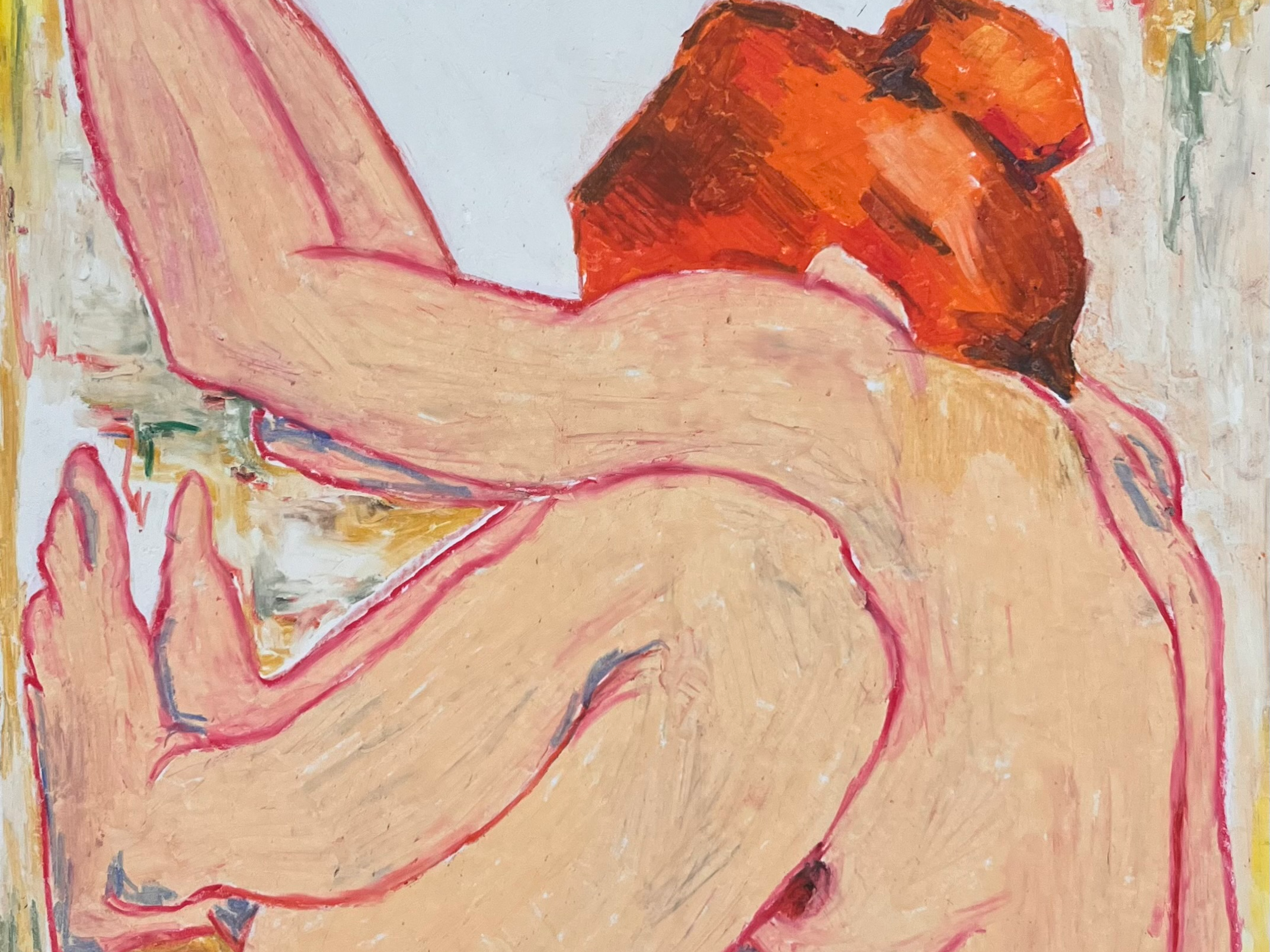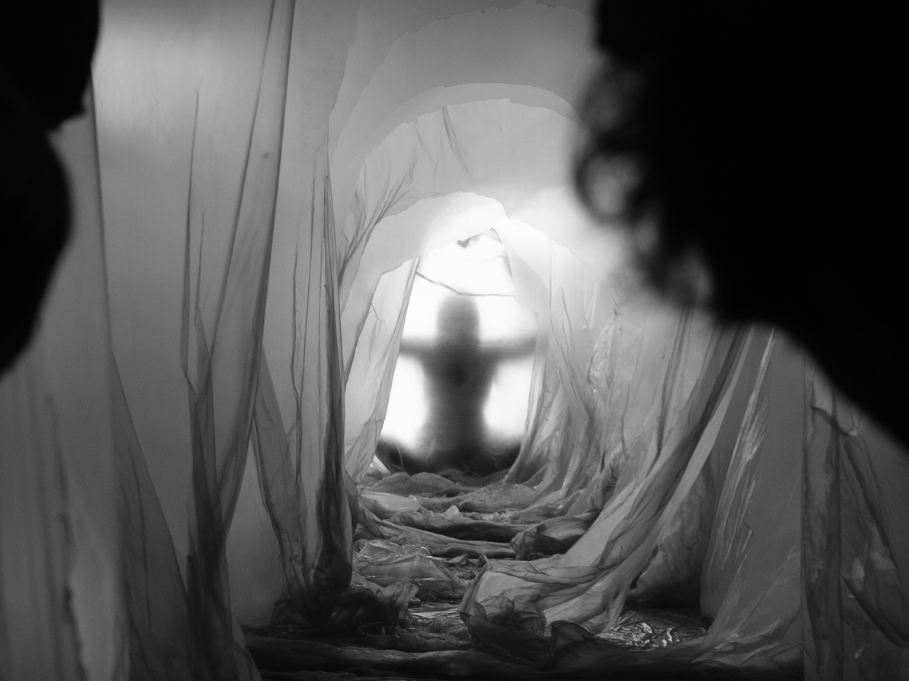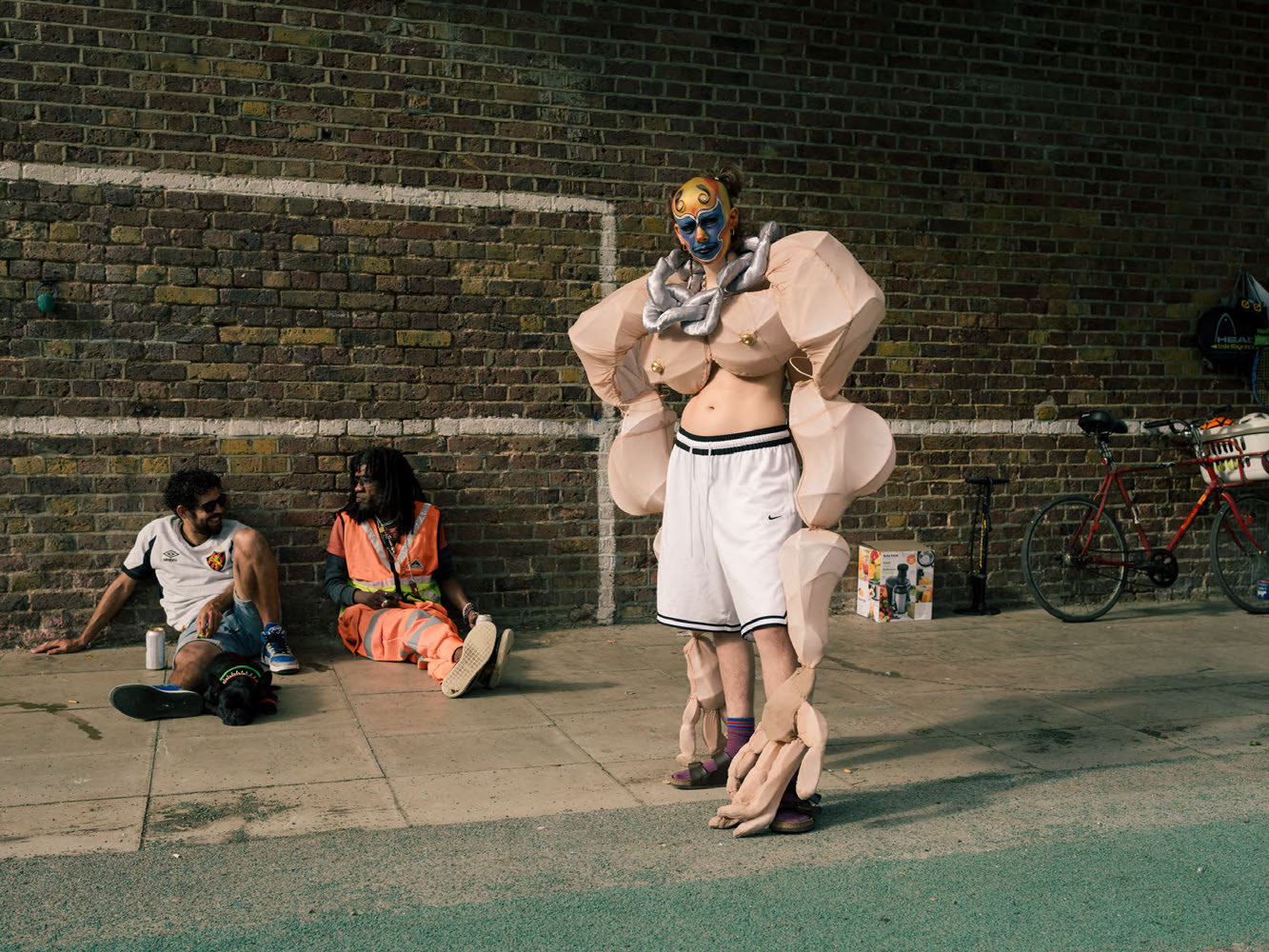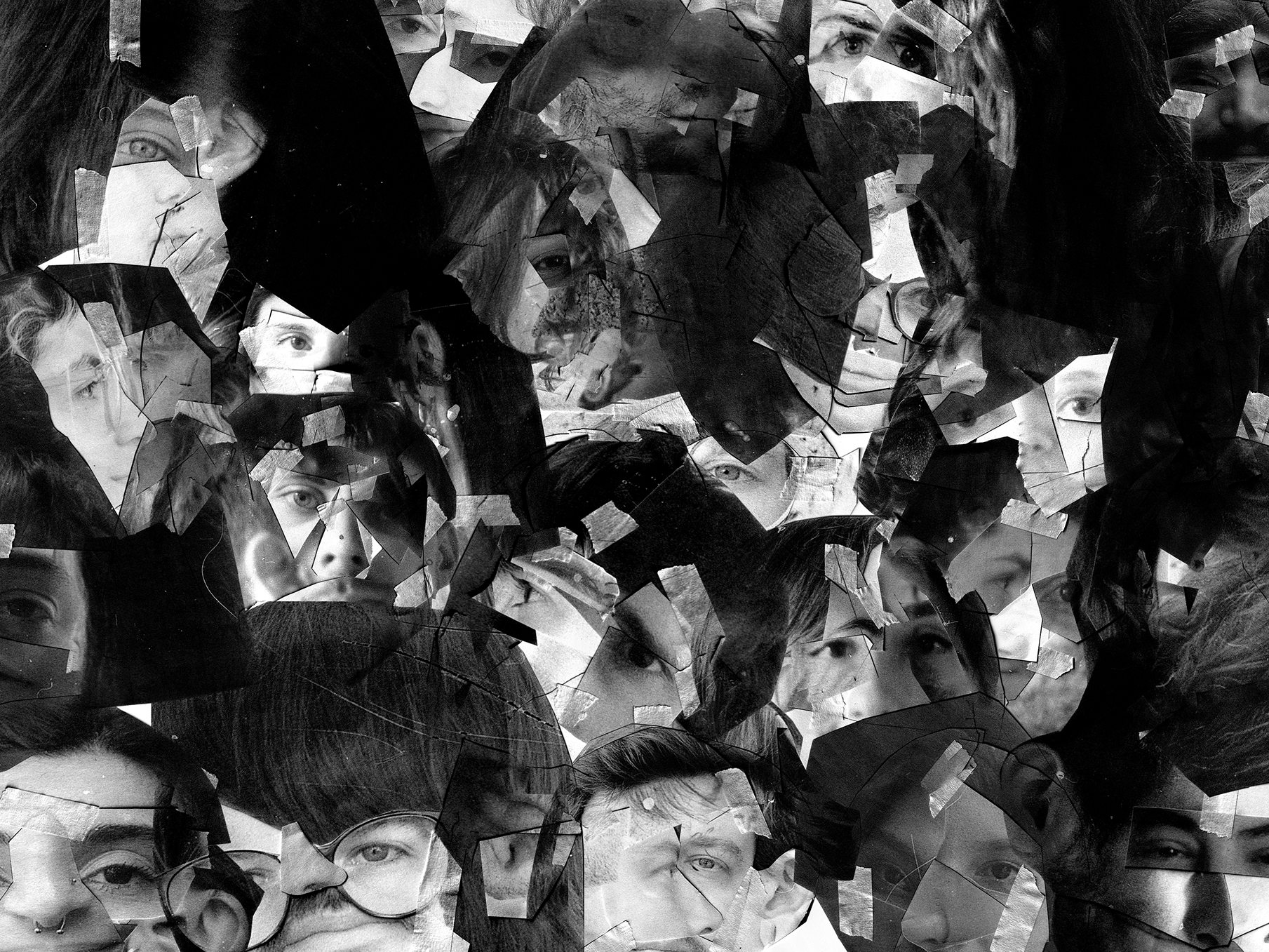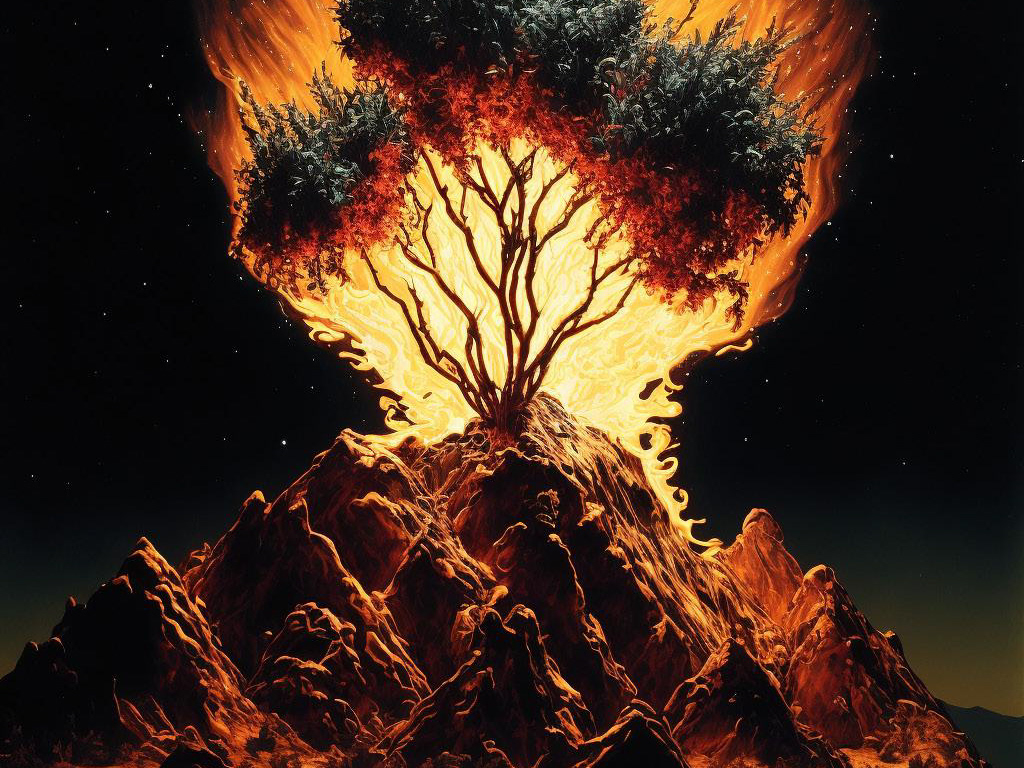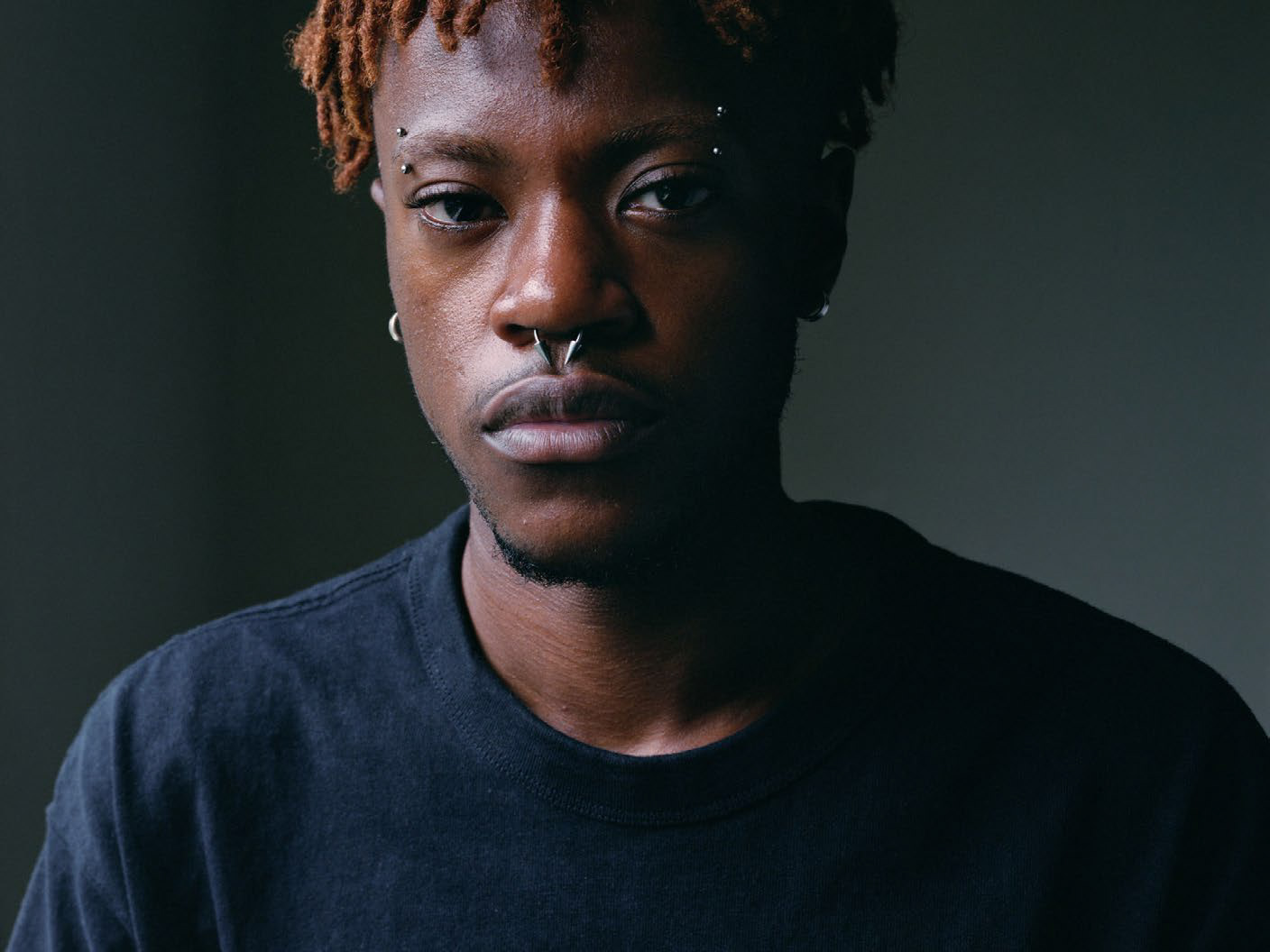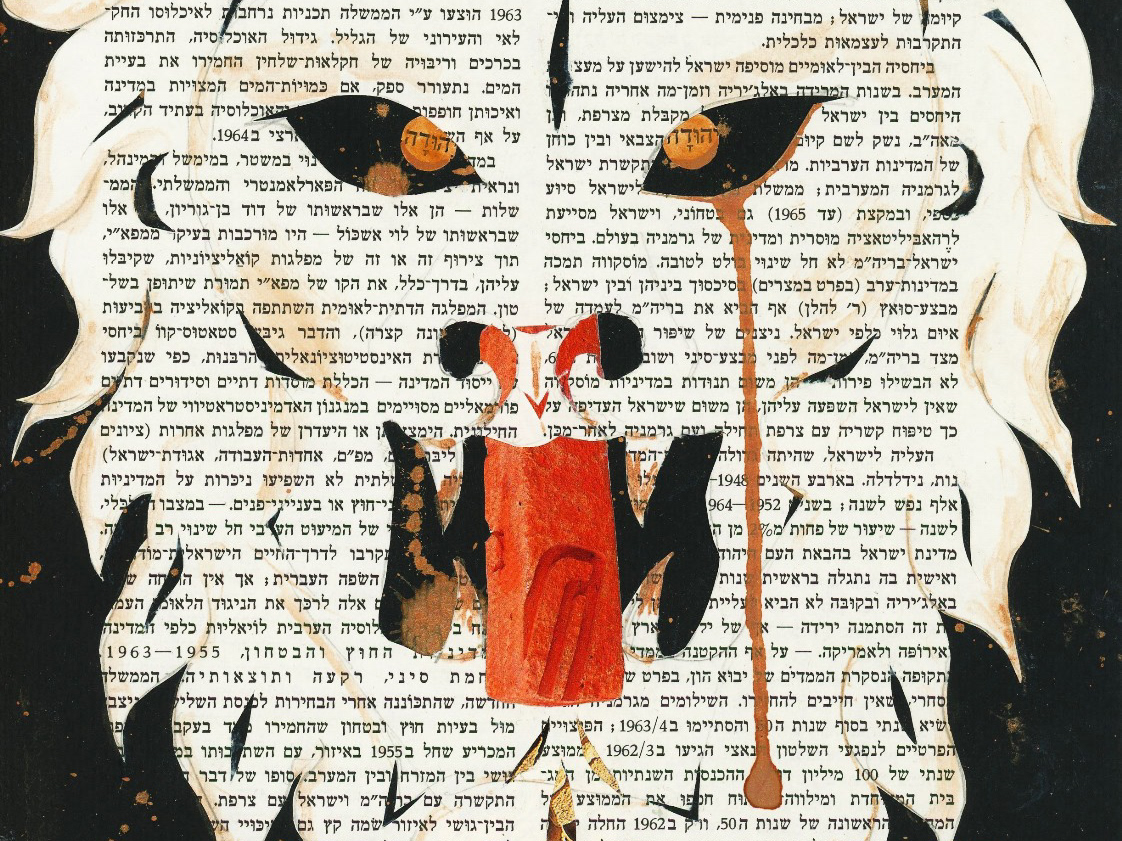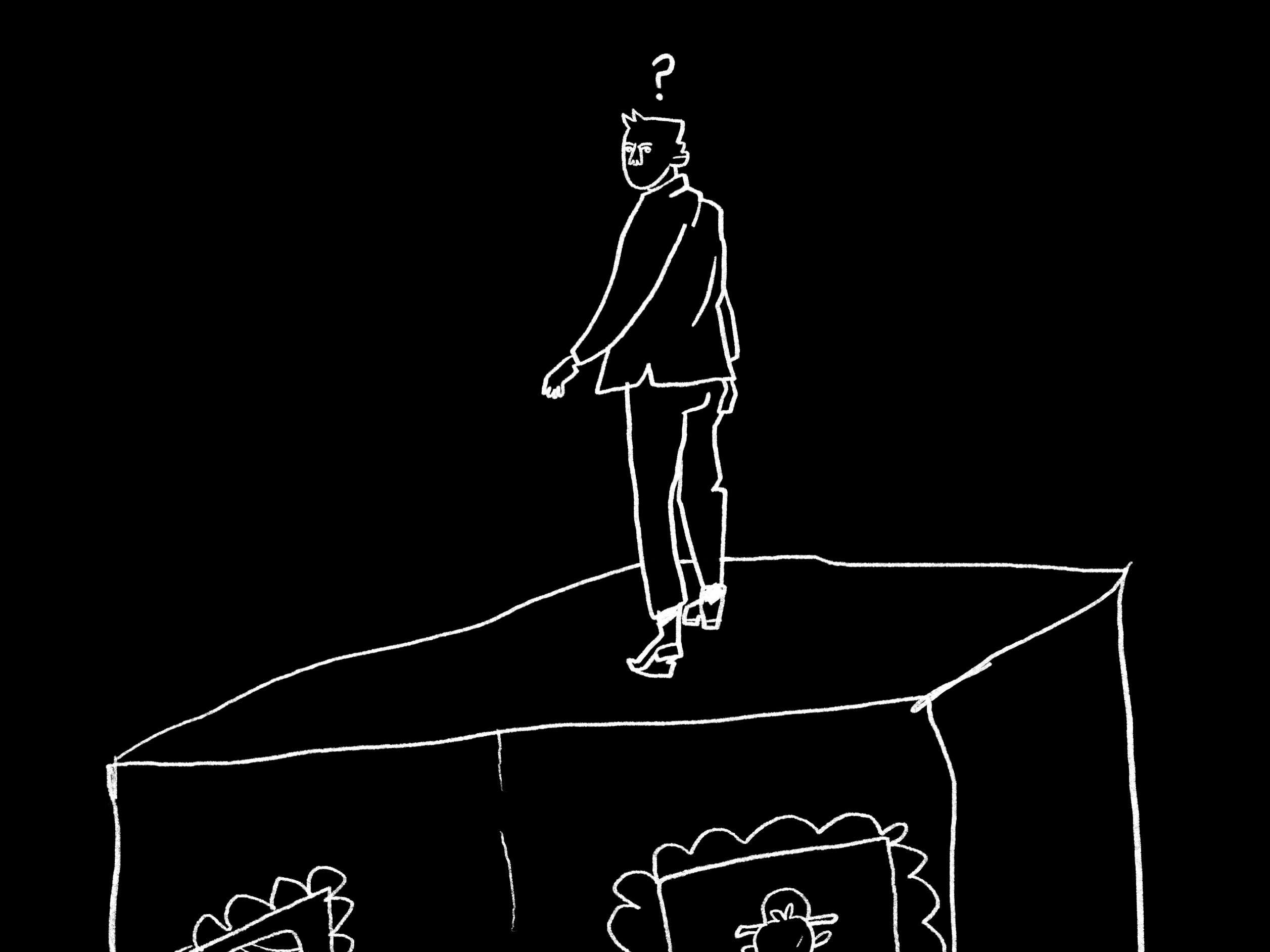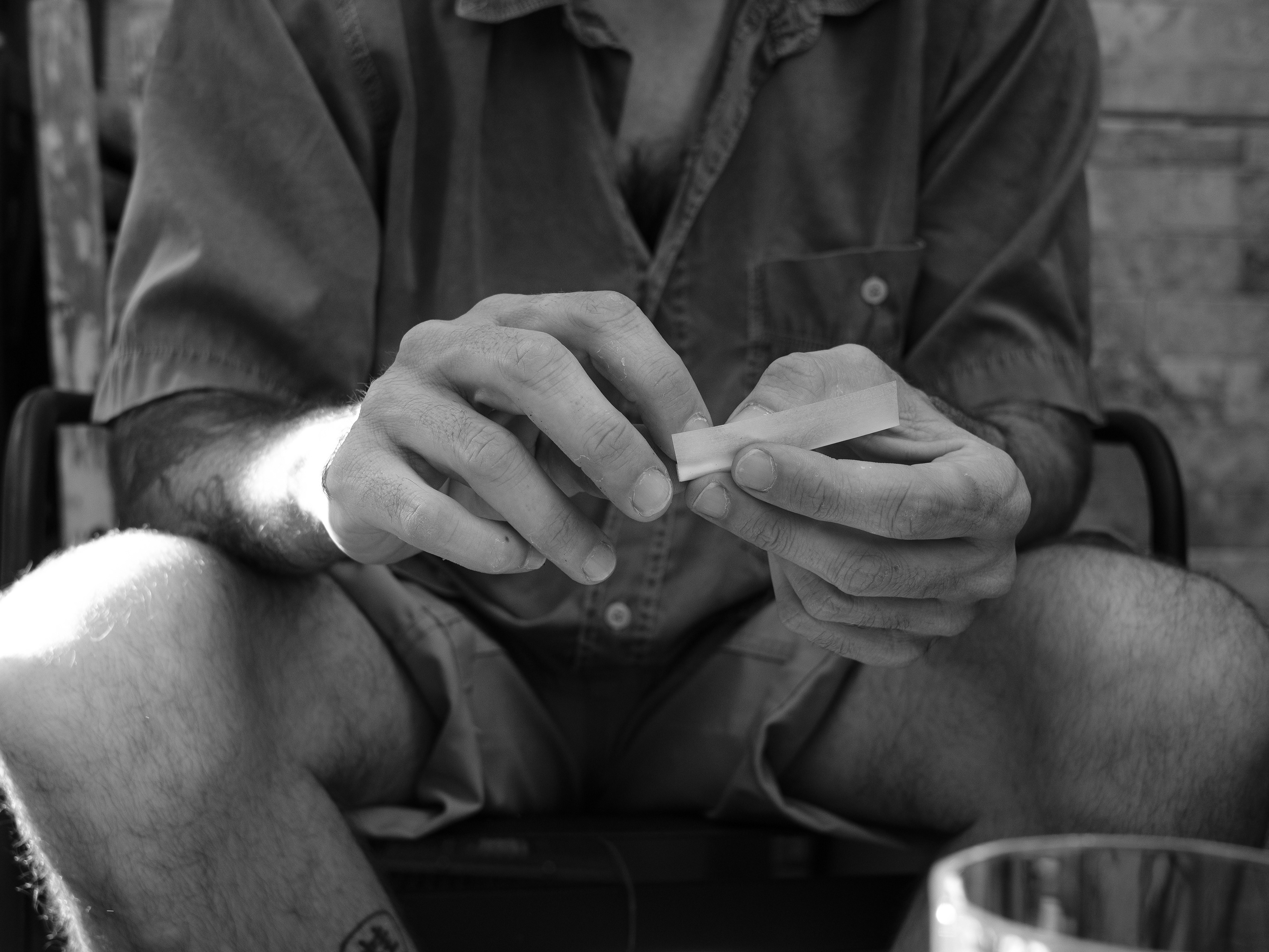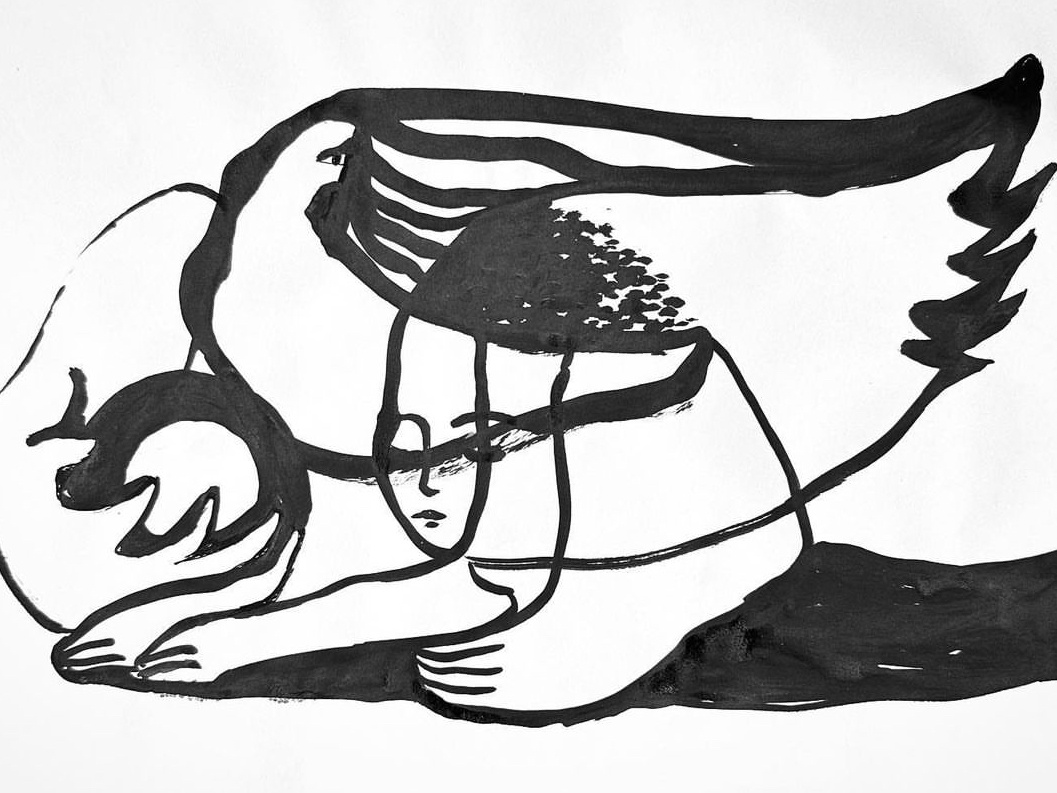WORK BY YEHONATAN BALASIANO
The Living Exhibition
INTERVIEWED: MAX MUHA, YEHONATAN BALASIANO,
DR. ELLA KAREV, MISHA GLASS, SASHA GUREVICH
Published on May 8th, 2025 as part of UNHiNGED #5 - Flesh and Form
Tattoos are everywhere, inked into nearly every corner of modern life. They adorn bodies like living tapestries, transforming skin into a permanent record of identity, experience, and art. It has become so common that you’d be hard-pressed to find someone who doesn’t have at least one tattoo. But how often do we stop and think about the art itself? What does it mean to turn your body into a walking exhibition, a canvas that carries your story? For those already covered in ink, how do these pieces reflect who they are—or who they want to be?For some, tattoos are an act of rebellion. For others, they’re storytelling. And for some, like Sasha Gurevich, tattoos are a personal archive of transformation.
"Most of my tattoos were created without any particular idea, but as I grow, their meanings reveal themselves to me," Sasha explains. "Every few years, I find a new meaning in the same images. It’s like my whole life is encoded on my body."For Misha Glass, another heavily tattooed artist, the experience has been different. Tattoos have made him hyper-visible, shaping how the world reacts to him. "In Russia, people stared. I got negative comments daily—'You’ll never get a job' or 'No one will marry you.' Here in Israel, it’s different. I feel more secure, but you never stop being aware that people will always have an opinion on your skin."
This tension—between self-expression and societal perception—is reflected not just in the people who wear tattoos but in the spaces where they are created. Two tattoo studios in Israel stand out for how they’re shaping what tattooing can be: INKLUDE Studio in Tel Aviv and Bezdna Studio in Jaffa.
Tattoo culture in Israel has evolved dramatically in the past decade. What was once considered taboo, or at least an act of quiet rebellion, has increasingly become a mainstream art form. Younger generations, especially in Tel Aviv’s creative and entrepreneurial circles, see tattoos as an essential part of personal identity rather than an act of defiance. Yet, despite their growing acceptance, tattoos in Israel still carry unique cultural weight.
Interestingly, Ella notes that the stigma around tattooing today is not necessarily rooted in Holocaust trauma or religious prohibition, as many assume. "Younger people don’t have the Holocaust association, and non-religious people don’t factor in the biblical prohibition. The stigma that remains is more global—the old association of heavy tattooing with drugs or subculture. Ironically, I know that section of the Bible particularly well, and it’s unclear whether it actually prohibits tattooing. I’ve won a few arguments that way."
While attitudes continue to shift, religious communities and certain workplaces still discourage visible tattoos. However, as Tel Aviv’s startup and creative industries flourish, visible tattoos are becoming more common, and the city has embraced the art form with its own distinct style. Israeli artists now blend elements of Japanese Irezumi, American traditional, and European blackwork into their designs, reshaping tattoo culture in the country.
At INKLUDE Studio in Florentin, tattooing is treated as a collaborative and evolving art form. The space is vibrant and welcoming, its green walls and massive windows creating an atmosphere that mirrors the lively street outside. Alongside tattoo beds, the studio doubles as a creative hub, featuring vintage clothing and handmade art by resident artists. With over twelve buzzing tattoo beds, the studio is constantly alive with the hum of machines and the chatter of artists and clients.
Founder Yehonatan Balasiano sees the studio as more than just a workspace—it’s a sanctuary for artists. "I built this space so artists could focus on their craft without worrying about percentages or gatekeepers," he explains. INKLUDE regularly hosts sketching nights, exhibitions, and guest artists, fostering a sense of shared growth rather than competition. Unlike traditional tattoo parlors, where apprenticeships are often rigid and hierarchical, INKLUDE offers an environment where artists can experiment and evolve freely.
What sets INKLUDE apart is its commitment to collaboration and reinvention. The studio has become a meeting point for local and international artists, blending different artistic traditions and encouraging innovation in the tattoo world. The freedom artists experience at INKLUDE results in designs that challenge conventions while remaining deeply personal to those who wear them. The space represents a new chapter in Israeli tattoo culture—one where tattoos are no longer just body adornments but living pieces of a constantly evolving art movement.Beyond just tattooing, INKLUDE has become an incubator for multidisciplinary artistry, integrating various creative fields such as illustration, fashion, and sculpture. Many of the resident artists engage in projects beyond tattooing, collaborating on exhibitions, pop-up events, and even mixed-media works that redefine traditional ideas of body art. The collaborative nature of the space has led to a growing community that extends far beyond its walls, influencing tattoo culture throughout Tel Aviv and beyond.
ABOVE: MUHA AT BEZDNA
For Sasha, this philosophy resonates deeply. "There’s not much certainty in life, but I know that (unless I burn in a fire or my body goes missing), I’ll show up in my fancy permanent stockings to my autopsy. That’s one of my tiny anchors to push through the chaos of life."
In contrast, Bezdna Studio in Jaffa is raw, intimate, and unapologetically rebellious. Tucked into an ancient stone building, its deep black walls serve as a backdrop for bold blackwork, hand-poked designs, and experimental tattoo styles. Punk and metal music fill the air, creating a space that embraces imperfection and risk-taking. Upstairs, a mezzanine houses a silk-screen printing workshop, reinforcing Bezdna’s commitment to blending tattooing with other artistic disciplines.
Founder Max Muha carries the raw, instinctive spirit of graffiti into his tattoo work. "Graffiti taught me to embrace imperfection and take risks. That energy is what I bring to every tattoo—an immediacy, a sense of unpredictability."
Bezdna has cultivated a fiercely loyal following within Israel’s counterculture, attracting clients who seek something beyond mainstream tattooing. Many of its regulars are heavily tattooed themselves, drawn to the studio’s ethos of defiance and authenticity. Here, tattooing is a statement, an act of self-determination.
Beyond ink, Bezdna serves as a sanctuary for artists who resist the commercial pressures of the industry. The space regularly hosts underground art shows, live performances, and community gatherings, fostering an environment where self-expression is not just encouraged but essential.This shift has redefined what it means to carry art with us. No longer confined to walls, museums, or galleries, tattoos exist in motion—changing as bodies move through time, space, and experience. A tattoo is never static; its meaning transforms with the wearer, taking on new significance as years pass. Sasha Gurevich describes her ink as a personal archive, where meanings unfold long after the needle has left the skin. For Misha Glass, tattoos have made him hyper-visible, influencing how he is perceived in different cultural contexts. Each tattooed individual carries not just images but stories—fragments of identity etched into flesh.
WORK BY MUHA
Tattoos exist in a paradoxical state. They are at once permanent and impermanent, designed to last a lifetime yet constantly evolving with the wearer. Every tattoo—no matter how intricate or simple—changes over time, its lines softening, its colors shifting, its presence adapting to the body that carries it. Unlike other forms of art, which exist on static surfaces, tattoos are bound to flesh, aging alongside the person who bears them.
For Balasiano, this transience is part of what makes tattooing so powerful. "No matter what you do on another person's body, this gives its life as part of their life," he says. "Even if I forget tattooing someone twenty years from now, they will never forget that experience. It becomes part of their identity." Tattoos are, in a sense, a living memory, an artwork that continues to shape itself long after the ink settles into the skin.
This idea resonates deeply with Max Muha of Bezdna Studio, who sees tattooing as a ritualistic act of self-marking. "It’s like you're imprinting energy onto a person," he explains. "The process of getting tattooed is an initiation—whether it’s about reclaiming your body, memorializing something, or simply embracing change. It’s not just about the ink; it’s about the experience of being marked."
Indeed, many who undergo the process of tattooing describe it as a deeply personal, almost sacred experience. It is a moment of commitment—not only to the art but to oneself. For some, tattoos act as anchors, reminders of past selves and past decisions. For others, they are acts of defiance, rejecting external expectations and reclaiming the body as a personal canvas.
Yet, while tattooing has become increasingly mainstream in Israel, its cultural perception remains layered with historical and societal influences. "People assume the biggest stigma comes from Holocaust trauma or religious restrictions," Jonathan explains.
Max, however, believes that the stigma is still very much present outside of Tel Aviv. "Walk around here, and no one blinks," he says. "But step outside the city, and suddenly you remember that Israel, for all its modernity, is still a deeply traditional place. People stare. They make comments. The idea of tattooing as something rebellious isn’t completely gone."
Beyond societal perceptions, another debate lingers within the tattooing world itself: is tattooing a craft or an art? Jonathan believes that it depends on the approach. "Most people see tattoos as a product. The client comes in, they ask for something, and you deliver it. But when an artist brings their own voice, when they use tattooing to say something personal or innovative, that’s when it becomes art."
Max, however, believes that the essence of tattooing lies in respecting the craft. "There’s a problem with how modern tattoo culture prioritizes how a tattoo looks in a photo rather than how it will age on the body," he argues. "People forget that tattoos exist on a living canvas. They stretch, they fade, they move. If a tattoo doesn’t last, then what’s the point?"
This tension between permanence and impermanence, between tradition and reinvention, is what makes tattooing such a unique art form. It is not static. It does not sit framed on a wall, waiting to be admired. Instead, it moves, it breathes, it evolves. It is as alive as the people who wear it.
And perhaps that is the true philosophy of tattooing: it is not just about aesthetics or rebellion or even personal identity. It is about marking time, about leaving behind something tangible in an ever-changing world. A tattoo is, at its core, a declaration—not just of who someone is, but of who they once were, and who they are still becoming.
This living, breathing exhibitionism is what studios like INKLUDE and Bezdna tap into. At INKLUDE, tattoos are a medium for collaboration and reinvention, a space where art evolves through shared creativity. Bezdna, on the other hand, leans into the raw energy of self-expression, embracing imperfection, immediacy, and rebellion. Both studios recognize that tattooing is no longer just about adornment—it is about storytelling, about carving a visual language onto the body that speaks beyond words.
In Israel, where personal and collective identity is deeply intertwined, tattooing is more than body art; it is a dialogue between past and present, self and society. Whether a quiet mark of remembrance or a loud act of defiance, each tattoo is a declaration—of autonomy, of belonging, of transformation. The medium has evolved, but its essence remains the same: a permanent imprint of fleeting moments, a personal museum carried through life.

